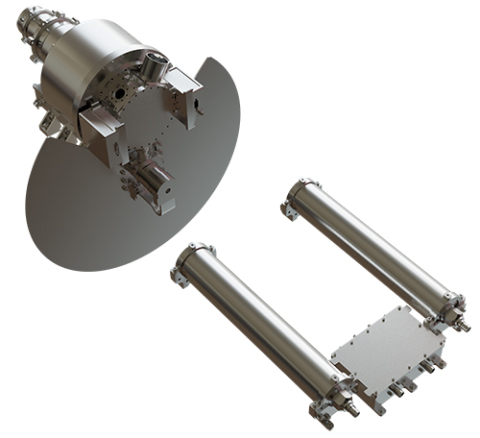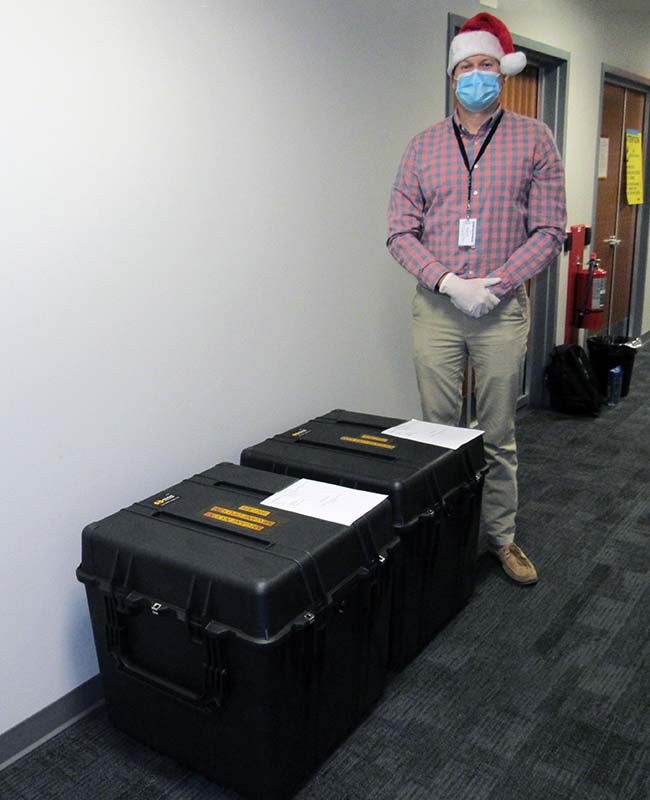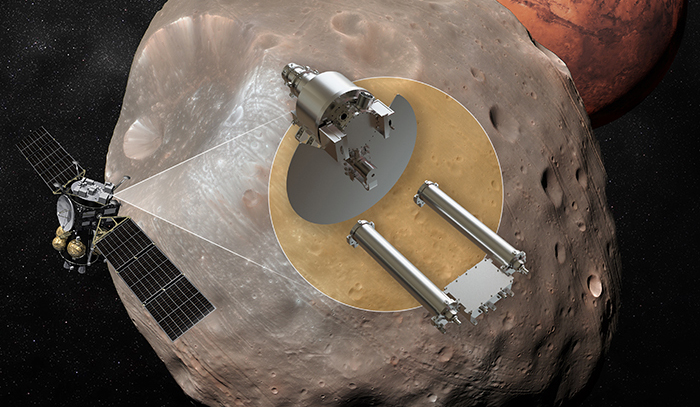Press Release
MEGANE Instrument Test Model Goes to Japan for Physical Tests and Design Review

Credit: Johns Hopkins APL
On Dec. 2, the Johns Hopkins Applied Physics Laboratory (APL) team designing a gamma-ray and neutron spectrometer for the Japan-led Martian Moons eXploration (MMX) mission shipped a test model of their instrument to the Mitsubishi Electric Corporation (MELCO), which is building the MMX spacecraft for the Japan Aerospace Exploration Agency (JAXA). The delivery represents a major milestone in the instrument’s development, as it’s the first opportunity for the JAXA and APL teams to physically test how well the MEGANE instrumentation fits into the MMX spacecraft design.
The Mars-moon Exploration with GAmma rays and NEutrons instrument, or MEGANE (pronounced meh-gah-nay, meaning “eyeglasses” in Japanese), is one of 14 instruments that will ride aboard MMX, a mission that aims to understand how Mars’ moons Phobos and Deimos were formed. MEGANE, which will “see” Phobos’ elemental composition, plays a critical part in answering that question.
The MEGANE test model, called a structural thermal model (STM), is a simplified version of the actual instrument. It’s equipped with heaters to simulate the temperatures each of MEGANE’s components is expected to produce, and thermocouples to measure their temperatures.
From a technical standpoint, the STM will validate that the mechanical and thermal design of the MEGANE hardware meets the expectations of all design teams.
“This test model delivery is about minimizing any possible variables that could become issues during launch and the mission,” said Spencer Disque, the engineering lead on the MEGANE STM. “It gives the team a nice warm and fuzzy feeling that the math, modeling and simulation are right.”

Credit: Johns Hopkins APL
Once attached to the MMX spacecraft with the STMs of the other 13 instruments, the model hardware will go through two tests: a thermal environment test to simulate the thermal conditions during the spacecraft’s time in space, and a vibration test to simulate the shakes and quakes expected during launch, which accelerometers provided in Japan will measure.
If there are unexpected results in either test, it may require modifications to the instrument design.
“It’s better to find discrepancies early than to experience unexpected behavior once we’ve integrated the actual flight instrument,” Disque noted.
The full set of tests is expected to be carried out sometime in the middle of 2021, depending on when the other spacecraft instruments arrive. “We’re one of the first instruments to deliver and be integrated,” said Brian Schratz, the MEGANE instrument systems engineer at APL. “The tests will happen once all the hardware arrives and is integrated.”
MEGANE is being developed under NASA’s Discovery Program, which provides low-cost scientific space missions relevant to NASA’s Science Mission Directorate. To learn more about MEGANE, visit http://megane.jhuapl.edu/.
